Soccer drills
- Both teams can score in a big goal with goalkeeper
- When the ball is out, the attackers play the ball back in, play or dribble in front of the defenders
- At a corner kick or goalkick, start at the goalkeeper of the trio
- Double score when the pair scores
- When the ball goes back in play by the goaldefender, he no longer participates in the game.
- Over time, the teams change.
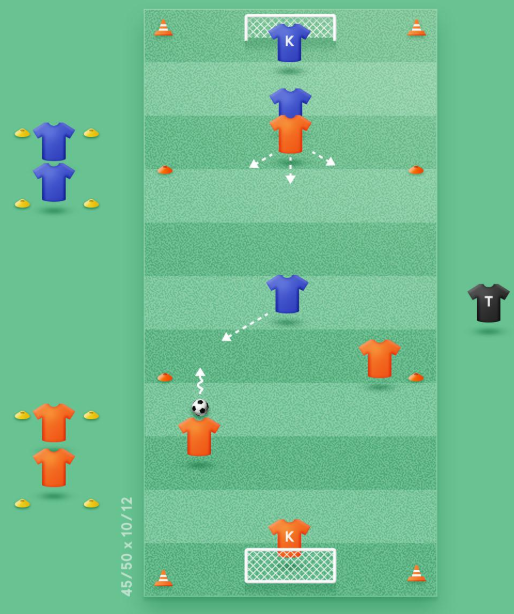
- Dribble to the player right in front of you. Just before the players reach the middle, they change direction 180 degrees and try to pass the player across the line.
- The defender may come off the line as soon as the attacker has cut the ball.
- Attacker scores a point when the ball is dribbled across the starting line
- Defender scores a point when the ball is dribbled outside the field
- When the ball is out, or when a point is scored, switch functions
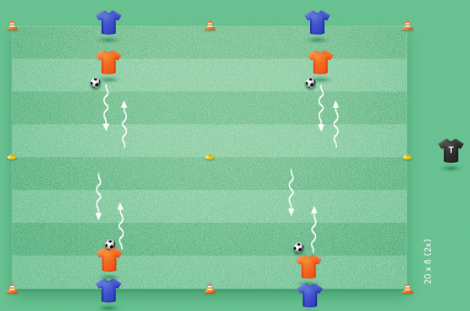
- The attackers try to create a chance or goal as quickly as possible
- The defenders try to hold up the attackers as long as possible and force them to one side
- The bottom defenders keep them close to each other so they can help each other.
- Do not get out if outnumbered, wait for the opponent to bring the ball to the side and then put pressure on it and keep the opponent on the same side
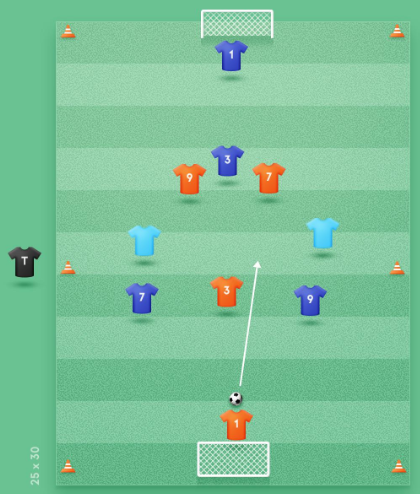
- Both teams can score on an ordinary goal with goalkeeper
- If the ball is out at the sides start at goalkeeper
- Corner kicks are taken
- Initially without offside

- Normal rules of the game (competition)
- Check that what has been learned is understood and applied in a match form
- Has the objective been achieved?
- To see the relationship between the solutions/possibilities offered in the previous exercise forms and a game (competition)
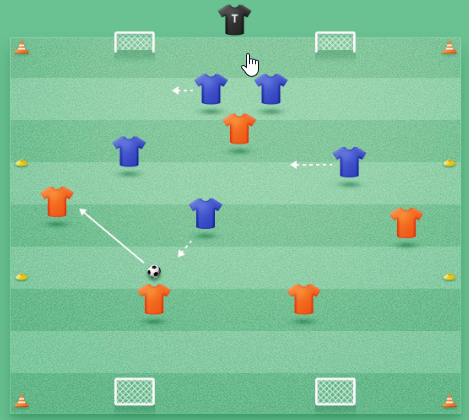
- 5 players in a square of 8 x 8 meters.
- On each corner 1 player and in the middle a player.
- The ball is passed around.
- The players who play the ball around may only touch the ball twice.
- The player in the middle has to touch or conquer the ball.
- If he/she already has or has touched the ball, this player takes over the position of the player at the corner that touched the ball last.
- The player playing the ball outside must also take the place of the player in the middle.
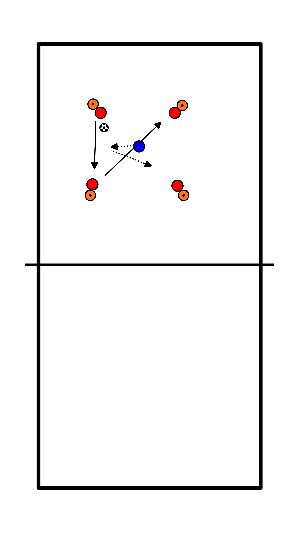
- Jump as far as possible from a standing position with your feet next to each other.
- Measure the distance between the starting line and the heel.
- The player sits with his back against the wall and his legs at an angle of 90 degrees.
- Keep this up as long as possible.
- Travel as fast as possible 5 times the distance of 10 meters.
- Put 2 pilons/line at 10 meters distance.
- The player runs 5 times back and forth between these pilons.
- The pilon/line must be hit with the foot !
- The players work in pairs.
- One player runs and the other player times.
- Put 4 pilons in a T-shape.
- 5 meters next to each other (between 3.2 and 4) and 10 meters ahead (between 1 and 2)
- Start at 1 forward to 2,
- then left sideways to 3,
- then right sideways to 4,
- then left sideways to 2
- and backwards to 1.
- Write down the fastest time in 2 attempts.
- Players work in pairs. 1 runs, 1 times.
- Cover as much distance as possible in 12 minutes.
- place pilons around the field every 10 meters.
- After 12 minutes the player stops where he stands.
- The distance to the pilon behind him/her counts.
- If the player stands between pilons 14 and 15, the distance of 140 meters (plus the number of complete rounds) counts.
- Cover 1600 meters in as fast as possible.
- Players work in pairs. One runs, the other times.
- Take 2x 100 meters over the length of the square and 2x 60 meters over the width of the square, place pilons.
- Players have to complete 5 complete rounds.








